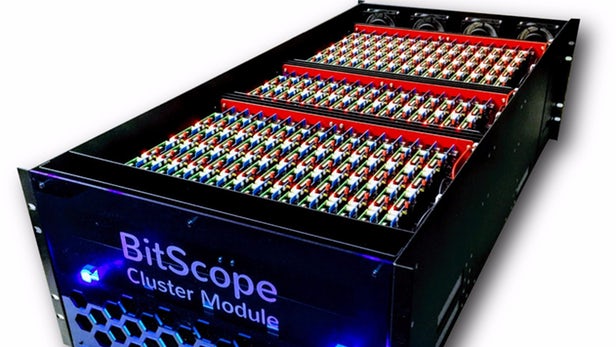By Warren Miller, contributing writer
Let’s say you’re a systems-software developer working on a program for a large supercomputer without access to one to actually test it on; what would you do? The High Performance Computing (HPC) Division at the Los Alamos National Laboratory, home of the Trinity supercomputer, has an answer. It involves connecting hundreds of the world’s smallest and most affordable computers together.
By partnering with SICORP and Raspberry Pi, the Australian company BitScope has designed a system built around hundreds of the credit-card-sized Raspberry Pi computers clustered together to effectively simulate an HPC environment for developers to test their software on. The module contains five clusters of 150 separate Raspberry Pi devices (nodes), which themselves contain four processor cores. It all adds up to 750 individual CPUs and 3,000 cores, all working together to provide a testbed similar in scale to some of the world’s largest supercomputers. Supercomputers like the Trinity at Los Alamos cost about $250 million to build and use up to 25 megawatts of electricity. A 1,000-node BitScope module is estimated to cost less than $150 per node and uses fewer than 6 kW, including network fabric and air flow.

The BitScope cluster module. Image source: BitScope.
Although the BitScope may not win any performance races when compared against the world’s top HPC champions, it does serve a very important mission for HPC system-software development. Getting access to one of the world’s fastest HPC systems to develop and test your code is just about impossible unless you’re very well-funded. The BitScope allows us less well-funded enthusiasts to develop and test out our HPC algorithms on a more affordable platform. Trying out different partitions for our algorithm on an actual platform can provide the feedback that we need to determine if our approach is viable. Maybe we only get to try out our weather model on a small Pacific island instead of the entire planet, but even that can tell us a lot about how our algorithm will scale, if we ever get a chance to run it on a “real” supercomputer.
The BitScope system has applications beyond system-software development as well, including things like high-performance networking research, sensor network simulations, education, and, of course, big data analytics for the IoT. The Raspberry Pi foundation originally invented the now seemingly ubiquitous micro-computer to help bring computing to low-income and developing areas — a basic model costs about $25 and runs on 2 to 3 watts of electricity. BitScope hopes to have the Pi cluster modules available for purchase by early 2018.
Advertisement
Learn more about Electronic Products Magazine





